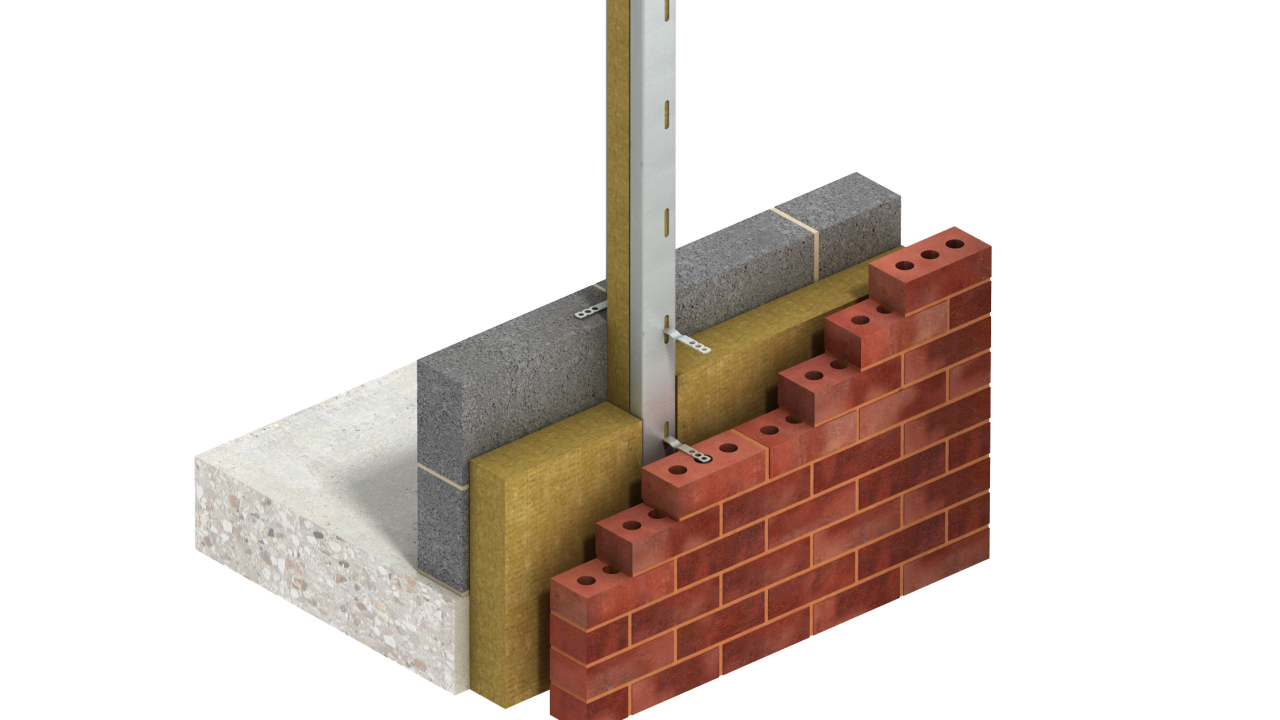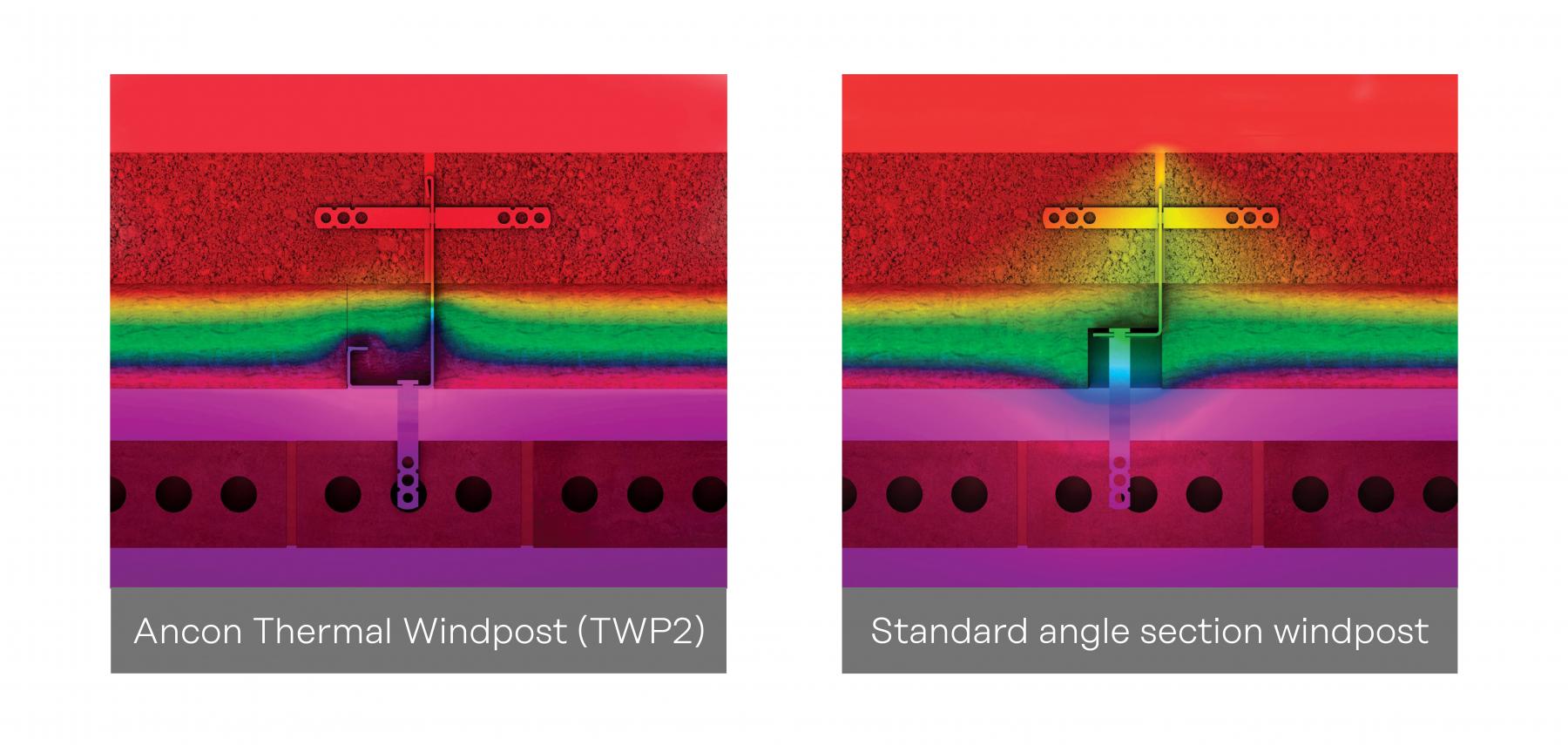

Thermal heat loss reduced by up to 70% with new Ancon from windpost suppliers, Leviat
Making zero carbon a reality is an enormous challenge for the constructor sector and for UK housebuilders, it will mean a seismic change in the design of new housing developments. Faced with the ‘zero carbon ready’ Future Homes Standard from 2025, contractors can reap the benefits from the new innovative Ancon Thermal Windpost (TWP2), by windpost suppliers Leviat, which has been designed to minimise thermal bridging in masonry cavity walls.
Following extensive research and testing, the patented Thermal Windpost (TWP2), part of the Ancon range of steel construction fixings, offers up to an impressive 70% reduction in thermal transmission through the windpost, guaranteeing the BRE level for thermal performance is met in all cases. It features integral insulation to ensure continuity of thermal performance across the wall area, and its innovative design means the windpost sits level with the outside face of partial fill insulation, so that it can be taped to further reduce thermal heat loss. The windposts design provides the additional benefit of eliminating time-consuming cutting of insulation to fit behind/around the windpost, increasing the overall speed and consistency of installation.
Manufactured from stainless steel with a teardrop fold for strength and engineered to minimise weight, the Ancon Thermal Windpost is manufactured to be up to 35% lighter than traditional windposts, making it easier to handle and install onsite. Again, this significantly improves speed of installation by reducing the requirement for complex manual handling procedures.
Used largely in commercial and multi-storey residential developments, and also increasingly in housing to provide more open-plan spaces, windposts provide lateral support to long panels of brickwork without piers or supporting walls, or as hidden support within piers adjacent to large window or door openings. Usually they create small voids in the insulation layer which can be difficult to properly fill, or be easily overlooked when installing insulation. Variations arising from inconsistency in cutting or omission of insulation in these small voids can often be overlooked when undertaking thermal calculations. This new product ensures proper continuity in the insulation layer, and makes installation of the surrounding insulation more consistent and straight-forward, helping both contractors and building designers realise the thermal performance aspirations of the detail.
The Ancon Thermal Windpost addresses one of the many thermal heat loss issues across a building’s fabric which contribute to the ‘performance gap’ between designed and realised thermal performance, and is part of windpost supplier Leviat’s continual drive towards innovation with products that improve performance to help create better buildings.
Commenting on the Ancon Thermal Windpost, Leviat’s Lisa Sherburne-Kilby said: “The new thermally efficient Thermal Windpost TWP2 is a game changer and a fantastic addition to our range. Windposts and other cavity intrusions have the potential to seriously downgrade the thermal performance of the wall, unless correctly specified, detailed and installed. Getting them right is important if we are to achieve the sort of levels of fabric heat loss now being considered in our race for zero-carbon construction.”
Leviat, a global leader in connecting, fixing, lifting and anchoring technology, designs and manufactures Ancon stainless steel support and restraint fixings for masonry cladding, engineered concrete connections and reinforcement continuity systems.

To find out more about the new Ancon range from windpost suppliers, Leviat, click here.
